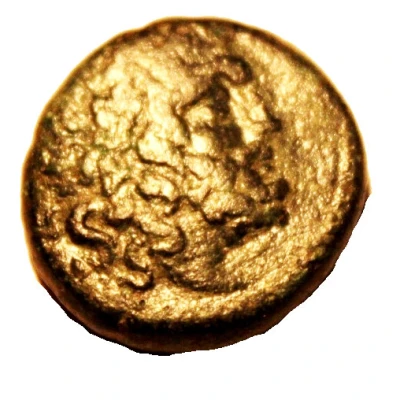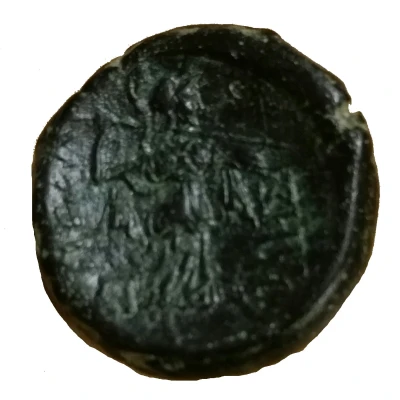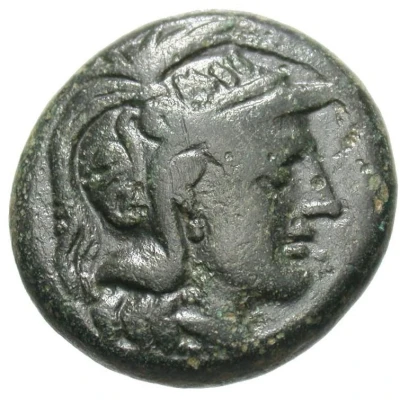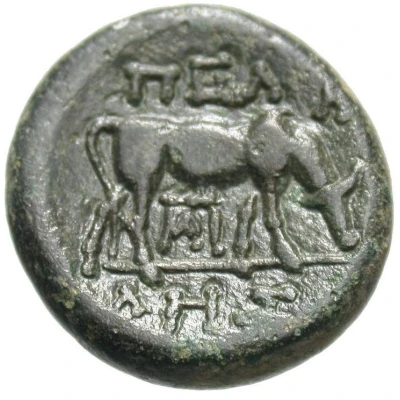


Obverse © Al Louarn
Hemiobol 168 BC
168 BC year| Bronze | 8.45 g | 19.7 mm |
| Issuer | Pella (Macedon) |
|---|---|
| Type | Standard circulation coin |
| Year | 168 BC |
| Value | Hemiobol (1⁄12) |
| Currency | Drachm |
| Composition | Bronze |
| Weight | 8.45 g |
| Diameter | 19.7 mm |
| Thickness | 4.4 mm |
| Shape | Round (irregular) |
| Technique | Hammered |
| Demonetized | Yes |
| Updated | 2024-10-10 |
| Numista | N#53427 |
|---|---|
| Rarity index | 90% |
Reverse
PEL-LHS above and below bull standing right, with long tail, head facing, monograms above and below and to right
Script: Greek
Lettering: ΠΣΛ - ΛΗΣ
Edge
Rough
Interesting fact
The Hemiobol coin from Pella (Macedon) was used as a form of currency during the reign of King Antigonus II Gonatas, who ruled Macedon from 278 to 239 BC. Despite being made of bronze, which was a common material for coins at the time, the Hemiobol was considered a high-denomination coin and was worth half of a full drachma, the standard unit of currency in ancient Greece.



